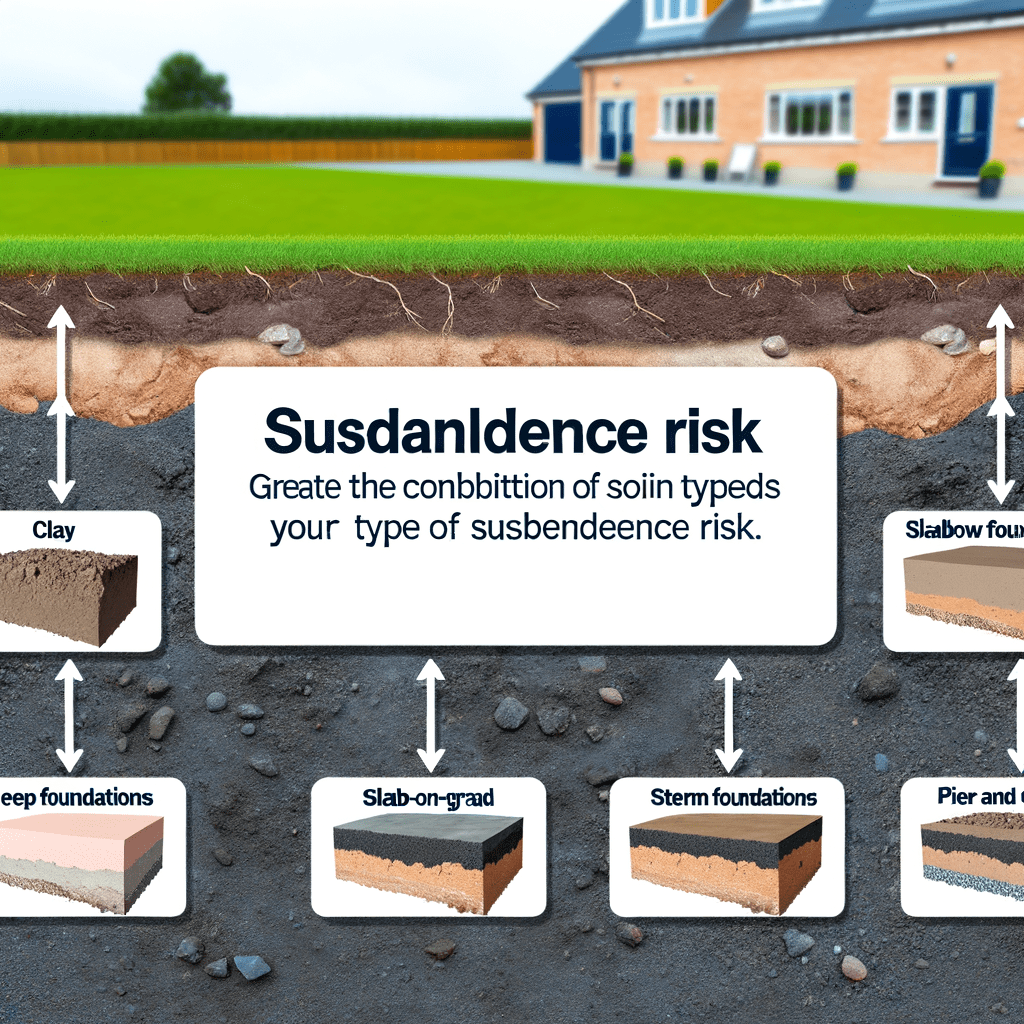Subsidence Risk, Soil Types, and Foundation Types: A Comprehensive Guide to Property Safety in the UK
In the realm of real estate, it’s crucial to assess the environment in which a property is built on, as various factors can influence its durability, structure, and safety. Soil types and foundation types are two of these influential elements, which significantly impact the risk of subsidence. In this discussion, we delve into the details of each factor, explore the relationship between different soil and foundation types, and evaluate their effects on subsidence risk.
Understanding Subsidence Risk
Subsidence is a term used to describe the sinking or downward settlement of a building’s foundation, often unleashing a series of daunting damages such as fissures and structural instability. It’s a geohazard every property owner must be cautious about, as it can impair property safety, deteriorate aesthetic appeal, and hit market value hard.
Understanding the risk of subsidence requires a close examination of contributing factors. It’s influenced by myriad elements, from climatic conditions to nearby vegetation. However, two primary components dictate their susceptibility – the type of soil the building’s greenfield site features, and the type of foundation it’s built upon.
Looking Deeper: Soil Types in the UK
The UK presents a vast diversity in soil types, each with its own structural, moisture retention, and drainage characteristics. The four key types found in the country include clay, loam, sandy, and chalky soils.
Clay soils, notorious for their subsidence risk, are highly dense and compact. They exhibit significant contraction and expansion during dry and wet periods. Conversely, sandy soils pose less of a risk due to their ability to drain water more efficiently, preventing significant soil movement. Loam, a combination of sand, silt, and clay, provides excellent structure and drainage, making it a favourable type for construction. Lastly, chalky soils have a varied texture that can be free-draining but may pose challenges due to their alkaline nature, impacting vegetation around the property.
Building Bases: Foundation Types
Now, turning the discussion towards the structures that carry the load of your property, the foundation types can be categorised primarily into two types – shallow foundations and deep foundations.
Shallow foundations, which include pad foundations, strip foundations, and raft foundations, are generally laid no more than 3 metres beneath the ground surface. This type is generally employed when hard soil strata are available at a shallow depth, when the imposed load is relatively small, or when site constraints prohibit the use of deep foundations.
Deep foundations, on the other hand, are utilised when there’s a need to transfer building loads to deeper, more stable soil strata, bypassing weaker or more compressible soils nearer to the surface. These include pile foundations and pier foundations, often seeing use in larger buildings and structures with significant loads.
Assessing the Combinations: Soil and Foundations that Impact Risk
The combination of soil types and foundation types is crucial in determining a building’s susceptibility to subsidence. For instance, constructing shallow foundations on expansive clay soils is often a risky proposition due to the soil’s high shrink-swell potential. The stability of clay can vastly change with moisture content, causing serious structural issues for buildings with shallow foundations.
On the other side, deep foundations, particularly pile foundations, are often the suitable choice for buildings on clayey soils. These foundations reach down into stable strata, mitigating the risk of movements caused by the swelling and shrinking of clay.
Loam and sandy soils, known for their excellent water drainage capabilities, usually pose lesser structural risks. Buildings with shallow foundations, like strip or raft, on these types of soils generally reflect lower subsidence risks.
The Role of Professional Surveying
Given the interplay between soil types, foundation types, and subsidence risk, expert assessment is integral for safe and sound construction. Professional surveying will provide a detailed understanding of the soil type present on your property, its bearing capacity, and the risks associated with it. Moreover, it will help determine the appropriate foundation type for a property, considering the soil conditions and the expected loading.
At Flettons, we’re committed to safeguarding your investment. When considering a property purchase, trust our seasoned expertise to reveal any hidden threats. For a thorough building survey, get your instant quote through our quote calculator or reach out directly at 0203 691 0451. Your home’s safety is our top priority.

